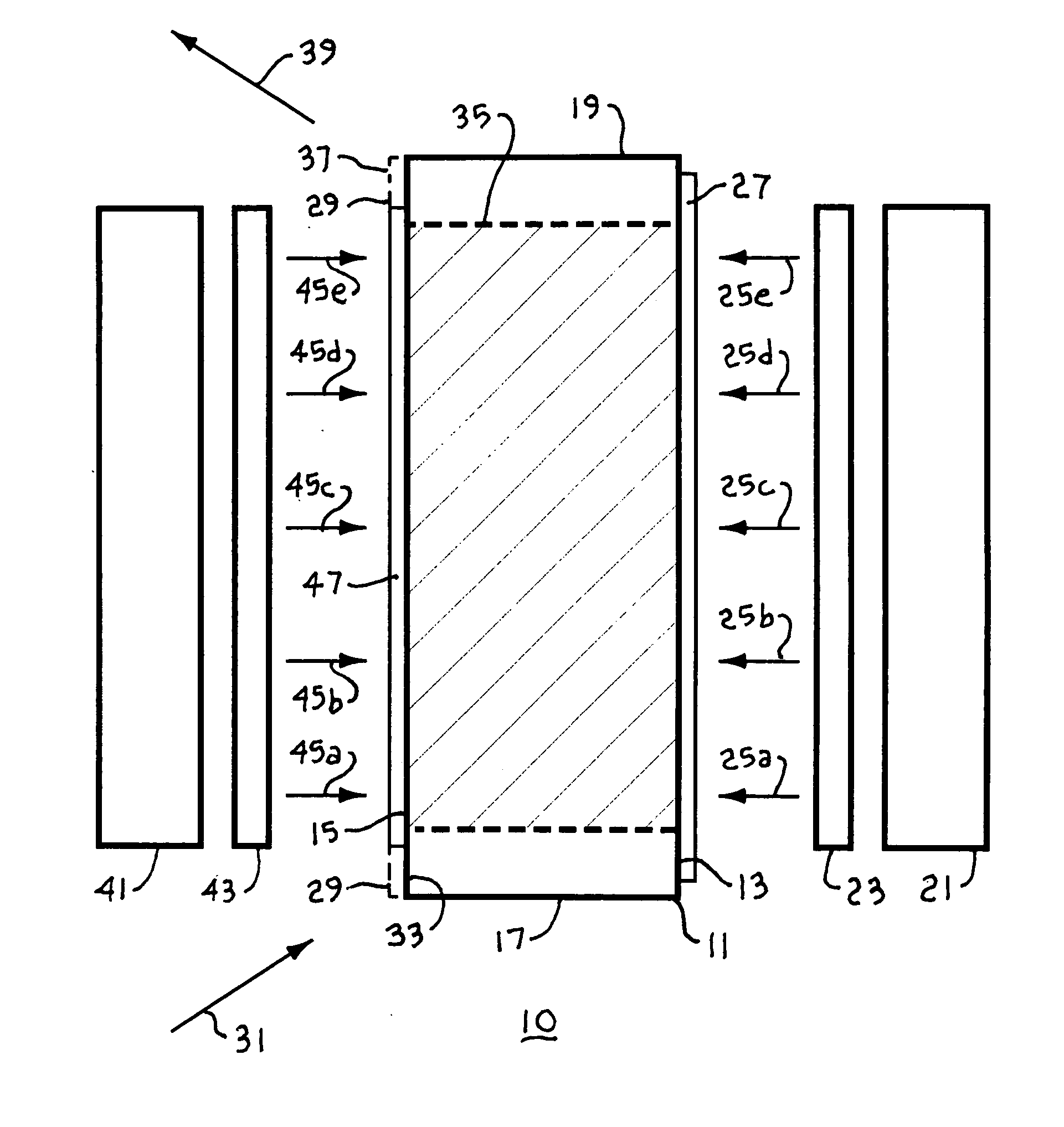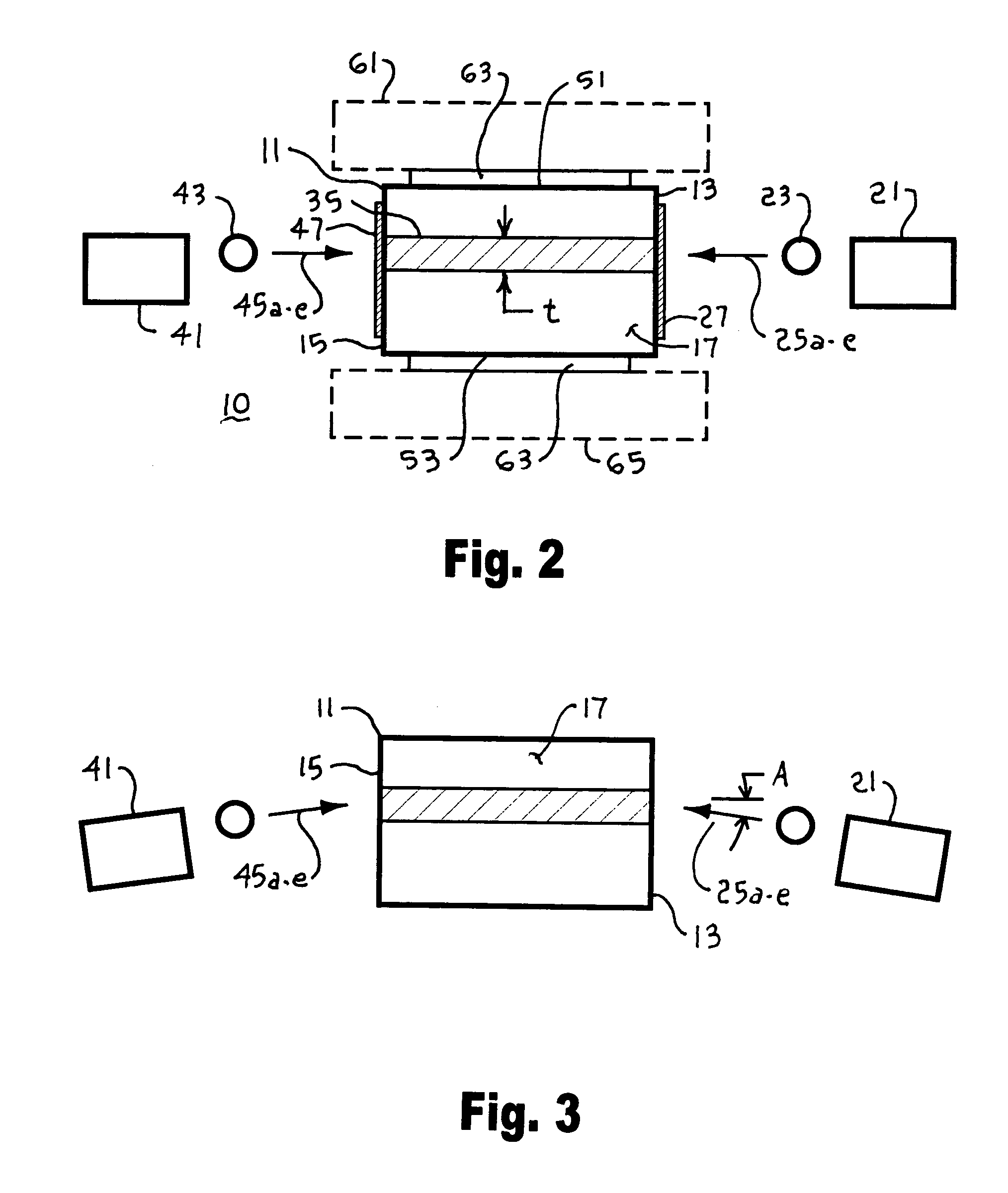High-gain diode-pumped laser amplifier
a laser amplifier and diode pump technology, applied in laser optical devices, laser details, active medium shape and construction, etc., can solve the problems of degrading the output beam quality of lasers, affecting the efficiency of side-pumped dpssl designs, and limiting the design of end-pumped lasers to generating relatively low average output power levels. , to achieve the effect of minimizing parasitic amplified spontaneous emission
- Summary
- Abstract
- Description
- Claims
- Application Information
AI Technical Summary
Benefits of technology
Problems solved by technology
Method used
Image
Examples
Embodiment Construction
[0061] There is shown in FIGS. 1 and 2 simplified diagrammatical illustrations of a laser amplifier 10 for an incoming laser beam 31 having a specified lasing wavelength, the laser amplifier 10 including a laser active slab 11, a diode bar 21, and an optional microlens 23. The laser active slab 11 includes a first lateral face 13, a second lateral face 15 opposed to the first lateral face 13, a first longitudinal face 17, and a second longitudinal face 19 opposed to the first longitudinal face 17. The laser active slab 11 may comprise a block of laser active material such as: Nd:YAG, Nd:YLF, Nd:YVO4, Nd:GdVO4, Yb:YAG, Yb:YLF, Tm:YAG, Tm:YLF, and Tm:YAlO.
[0062] The diode bar 21 comprises a plurality of semiconductor diode lasers (not shown), operating at a pump power wavelength and emitting a respective plurality of radiation beams, as represented by diode emitter beamlets 25a-25e. The laser active slab 11 may include an optical coating 27, such as a thin-film dichroic coating, disp...
PUM
 Login to View More
Login to View More Abstract
Description
Claims
Application Information
 Login to View More
Login to View More - R&D
- Intellectual Property
- Life Sciences
- Materials
- Tech Scout
- Unparalleled Data Quality
- Higher Quality Content
- 60% Fewer Hallucinations
Browse by: Latest US Patents, China's latest patents, Technical Efficacy Thesaurus, Application Domain, Technology Topic, Popular Technical Reports.
© 2025 PatSnap. All rights reserved.Legal|Privacy policy|Modern Slavery Act Transparency Statement|Sitemap|About US| Contact US: help@patsnap.com



